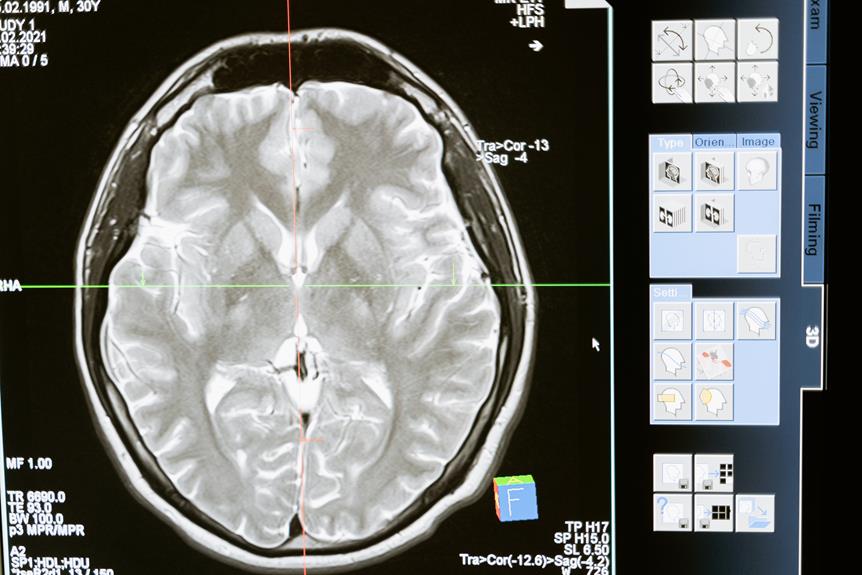Medical Negligence Leads to Devastating Brain Injuries
This article examines the critical issue of medical negligence resulting in Hypoxic-Ischemic Encephalopathy (HIE), a severe brain injury. We delve into the causes, symptoms, and prevention measures of HIE, exploring the link between medical malpractice and such injuries. The piece underscores the importance of early detection, healthcare provider responsibility, and the role of legal action in seeking redress. This comprehensive analysis aims to heighten awareness, emphasizing the profound consequences of medical negligence and the resources available to affected families.

Key Takeaways
- Hypoxic-Ischemic Encephalopathy (HIE) is a condition characterized by oxygen deprivation and reduced blood flow to the brain, which can lead to long-term disabilities such as cerebral palsy and intellectual disabilities.
- The main causes of HIE include birth asphyxia, placental abruption, umbilical cord problems, maternal infections, and medical errors during delivery.
- Medical malpractice can occur in cases of HIE if healthcare providers fail to properly monitor the fetal heart rate, delay or misinterpret signs of distress, or improperly use delivery instruments.
- Prompt recognition and intervention are crucial in minimizing the potential damage caused by HIE, and proper prenatal care and adherence to established protocols can help prevent medical errors.
Understanding Hypoxic-Ischemic Encephalopathy (HIE) and Its Causes
Hypoxic-Ischemic Encephalopathy (HIE) is a severe brain dysfunction that arises from a lack of sufficient oxygen and blood flow, often caused by complications such as birth asphyxia, placental abruption, and medical errors during delivery. Understanding HIE risk factors is crucial in preventing this devastating condition. These may include maternal health issues, umbilical cord complications, and challenging delivery circumstances. The key to mitigating the effects of HIE lies in swift identification and intervention. Identifying HIE in newborns involves recognizing symptoms such as seizures, poor muscle tone, and abnormal reflexes. Through a detailed, analytical approach, healthcare professionals can significantly reduce the incidence and impact of HIE. Moreover, an empathetic understanding of the trauma experienced by affected families underlines the urgency of this mission.
Recognizing the Symptoms of Hypoxic-Ischemic Encephalopathy (HIE)
Although the severity of symptoms can vary, it is imperative for healthcare providers to be adept in recognizing signs of Hypoxic-Ischemic Encephalopathy (HIE), such as seizures, poor muscle tone, and abnormal reflexes, to ensure timely intervention and treatment. Recognizing HIE symptoms in newborns is critical, as immediate and appropriate response can significantly influence the prognosis. Moreover, understanding the importance of early intervention and treatment for HIE can potentially prevent long-term neurological complications. The clinical presentation of HIE can be subtle, making its recognition challenging. Therefore, healthcare providers should maintain a high index of suspicion, especially in neonates exhibiting unexplained abnormal signs. Empathy towards the affected families, coupled with proactive, comprehensive care can make a significant difference in the lives of these newborns.
The Connection Between Medical Malpractice and Hypoxic-Ischemic Encephalopathy (HIE)
In the realm of medical malpractice, negligence or substandard care during delivery can directly lead to Hypoxic-Ischemic Encephalopathy (HIE), and often involve claims of failure to provide appropriate medical intervention or a timely cesarean section. This connection between medical malpractice and long-term disabilities in HIE cases is a significant concern. Early and accurate diagnosis of HIE, followed by prompt intervention, can significantly reduce the risk of lifelong disabilities. However, when medical professionals fail in these duties, the consequences are devastating. Therefore, it is crucial to stress the importance of prompt recognition and intervention in HIE cases. Legal recourse may provide families with the necessary resources for a child's long-term care, but the focus should remain on prevention through improved medical practices.
Proactive Measures to Prevent Hypoxic-Ischemic Encephalopathy (HIE)
The implementation of proactive measures, such as regular prenatal check-ups and vigilant fetal heart rate monitoring, is crucial in preventing Hypoxic-Ischemic Encephalopathy (HIE), and it also necessitates the need for healthcare professionals to adhere strictly to established protocols during labor and delivery. Preventive strategies should include education for expecting parents about the risks of HIE, ensuring they can advocate for the necessary care. The importance of early intervention cannot be understated, as timely diagnosis and treatment can mitigate the damage caused by HIE. This approach requires detailed, analytical assessment of the fetus's health status, combined with empathetic patient care, to ensure optimal results. In essence, the combined effort of healthcare professionals and informed patients is a formidable deterrent to HIE.
The Role of Legal Action in HIE Cases
Legal action in HIE cases, often involving medical malpractice lawsuits, holds healthcare professionals accountable for negligence or substandard care, and it provides the affected families with a chance to obtain compensation for their emotional and financial distress. The importance of legal representation in these cases cannot be overstated, as it can greatly influence the outcome. Skilled attorneys can navigate the complexities of the legal system, gather the necessary evidence, and advocate effectively for the victims. They play a critical role in seeking justice for medical negligence, providing a voice for those who have suffered due to avoidable mistakes. Understanding this, families are encouraged to secure legal counsel, to ensure they receive the support and justice they deserve.
Exploring the Impact of Medical Negligence on Brain Injuries
Often, medical negligence results in catastrophic brain injuries and, alarmingly, this happens more frequently than most people realize. The impact on the healthcare system is significant, with increased hospitalization rates, long-term care needs, and high healthcare costs. From an analytical perspective, the prevention of such injuries through better training and adherence to medical protocols is a cost-effective and humane solution. The emotional toll on families is immeasurable, with parents grappling with guilt, anger, and grief, while also navigating complex medical and legal systems. The need for psychological support for these families is paramount. Overall, the cost of medical negligence in cases of brain injury is not just financial; it is a burden carried by families and society alike.
The Long-term Consequences of Brain Injuries Caused by Medical Negligence
Examining the long-term consequences of brain injuries caused by medical negligence, we find an array of physical, cognitive, and emotional challenges that patients must endure, and these hardships are often coupled with a significant financial burden. Rehabilitation options for individuals with brain injuries caused by medical negligence are diverse, but they often involve prolonged physical therapy, cognitive training, and emotional support services. Despite these efforts, the recovery journey can be slow and fraught with difficulties, notably the emotional toll of brain injuries caused by medical negligence. Patients frequently experience feelings of frustration, depression, and anxiety as they grapple with their altered life circumstances. It is thus crucial that medical institutions take responsibility for their errors and provide the necessary support to their patients.
Resources and Support for Victims of Medical Negligence Induced Brain Injuries
Several resources, including counseling services and financial support, are available for victims of medical negligence-induced brain injuries, but many individuals remain unaware of these services or face barriers in accessing them. Legal recourse, often a daunting prospect, can provide financial compensation and justice. This, however, requires victims to navigate complex legal systems, often while dealing with significant emotional and physical challenges. Emotional support, too, is critical. Support groups, therapists, and community programs can provide a lifeline for victims and their families, offering a safe space to share experiences and coping strategies. Ultimately, it is imperative that victims of medical negligence-induced brain injuries are provided with accessible, comprehensive support, and clear pathways to justice.
Frequently Asked Questions
What Are the Psychological Effects on Parents Dealing With a Child Affected by HIE Due to Medical Negligence?
Parents dealing with a child affected by HIE often undergo significant psychological distress, experiencing a complex parental grief process. This includes feelings of loss, anger, guilt, and anxiety. They may also face challenges in family dynamics and personal relationships. Emotional coping strategies, such as seeking professional counseling, joining support groups, and practicing self-care, are crucial in managing these psychological effects. Further research can offer deeper insights into their unique emotional journeys.
Are There Any Technological Advancements or Research in Progress to Treat or Prevent Hie?
Yes, advancements in technology and research are contributing to improved HIE diagnosis and prevention. Technological interventions like brain cooling therapy have shown promise in mitigating brain damage. Additionally, advanced imaging techniques are enhancing the accuracy of HIE diagnosis. Research is ongoing to explore novel therapeutic strategies, including stem cell therapy and neuroprotective drugs, which could potentially revolutionize the treatment of HIE in the future.
How Does the Healthcare System Address the Issue of Medical Negligence Leading to Hie?
The healthcare system addresses medical negligence leading to Hypoxic-Ischemic Encephalopathy (HIE) through stringent monitoring and training for healthcare professionals. However, when negligence does occur, the consequences can be severe, often resulting in devastating brain injuries. Legal recourse is available for affected families, who may file a medical malpractice lawsuit. This process can provide compensation for medical expenses, pain and suffering, and necessary long-term care.
How Can Schools and Communities Support Children and Families Dealing With the Long-Term Effects of Hie?
Schools and communities can support children and families dealing with HIE's long-term effects by implementing special education programs tailored to the child's specific needs. Financial assistance can be provided for therapies and necessary medical equipment. Furthermore, fostering peer support through inclusive activities promotes social integration. Regular training for staff on HIE can enhance understanding and empathy, ensuring a supportive and conducive learning environment for affected children.
Are There Any Lifestyle Modifications or Therapies That Can Improve the Quality of Life for Children Affected by Hie?
Yes, lifestyle modifications and targeted therapies can significantly improve the quality of life for children affected by HIE. Customized nutrition plans can address feeding difficulties and promote optimal development. Additionally, physical, occupational, and speech therapies can enhance functional abilities and self-sufficiency. Regular exercise also benefits overall health and well-being. While the prognosis of HIE varies, these interventions can help manage symptoms and improve the child's quality of life.
Conclusion
In conclusion, Hypoxic-Ischemic Encephalopathy (HIE) is a severe, life-altering brain injury often linked to medical negligence. Prevention strategies are crucial, including early detection and proactive healthcare practices. Legal recourse offers victims a path towards justice, underscoring the gravity of medical malpractice. The devastating long-term consequences of these brain injuries necessitate robust resources and support systems for affected individuals and their families, emphasizing the urgent need to address medical negligence in the healthcare industry.

This post has been generated by AI and was not reviewed by editors. This is Not legal advice. Please consult with an attorney.




